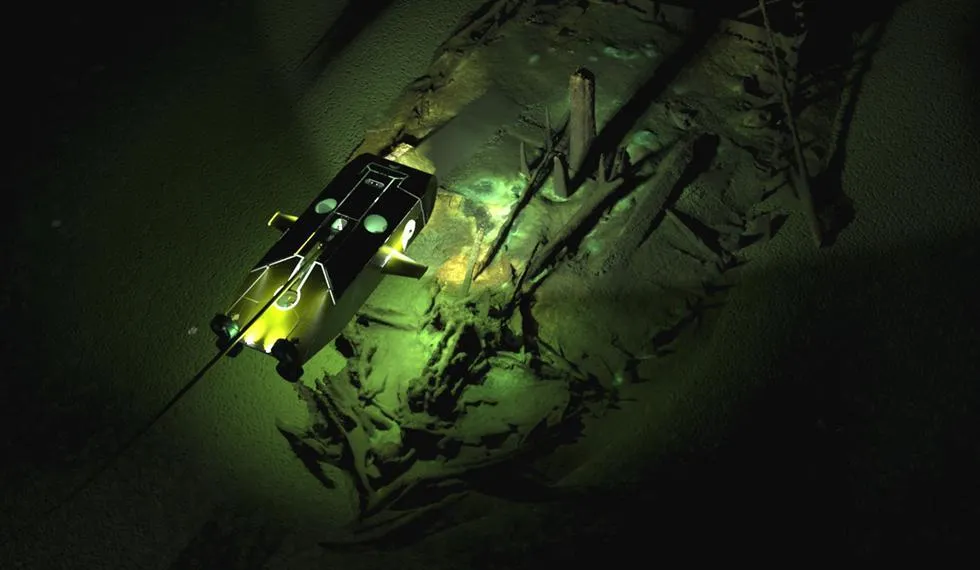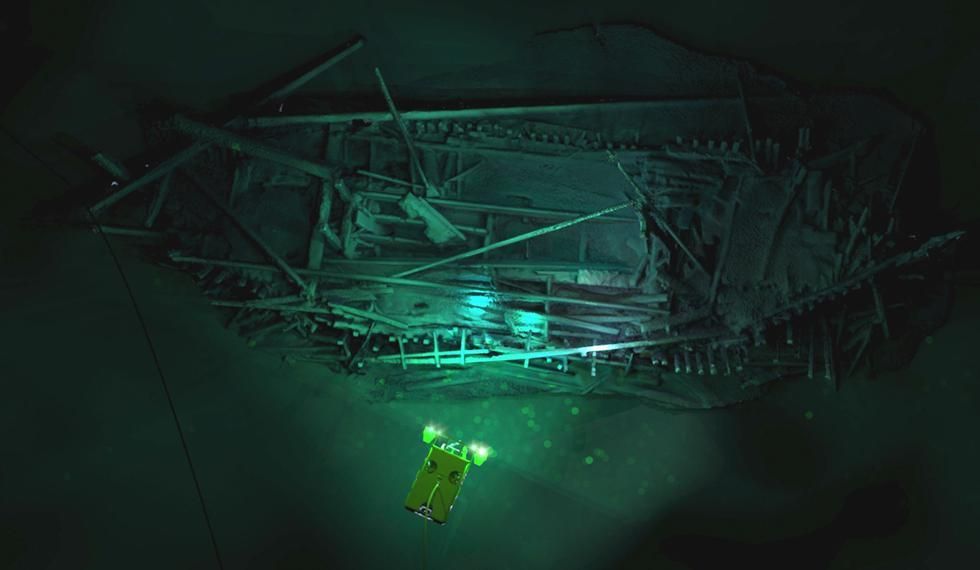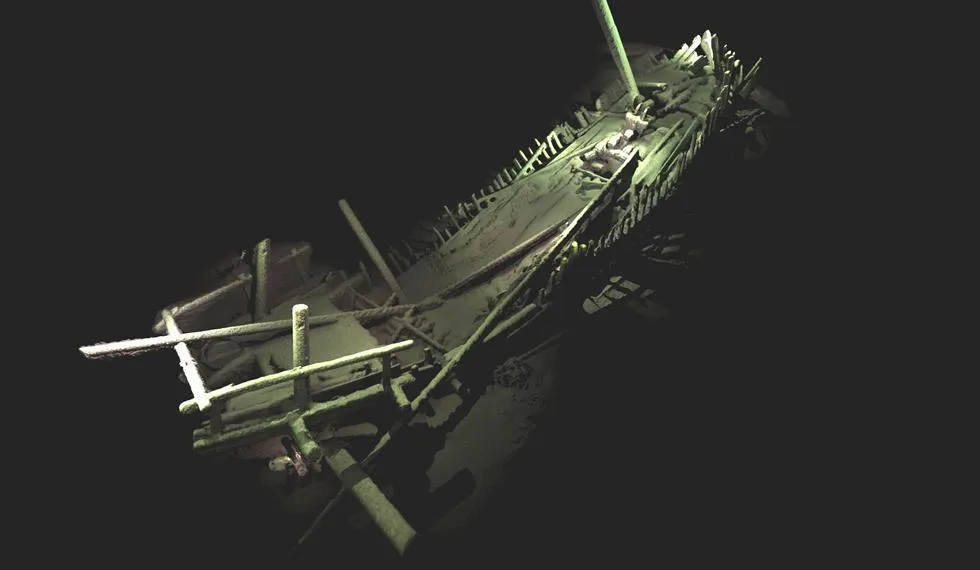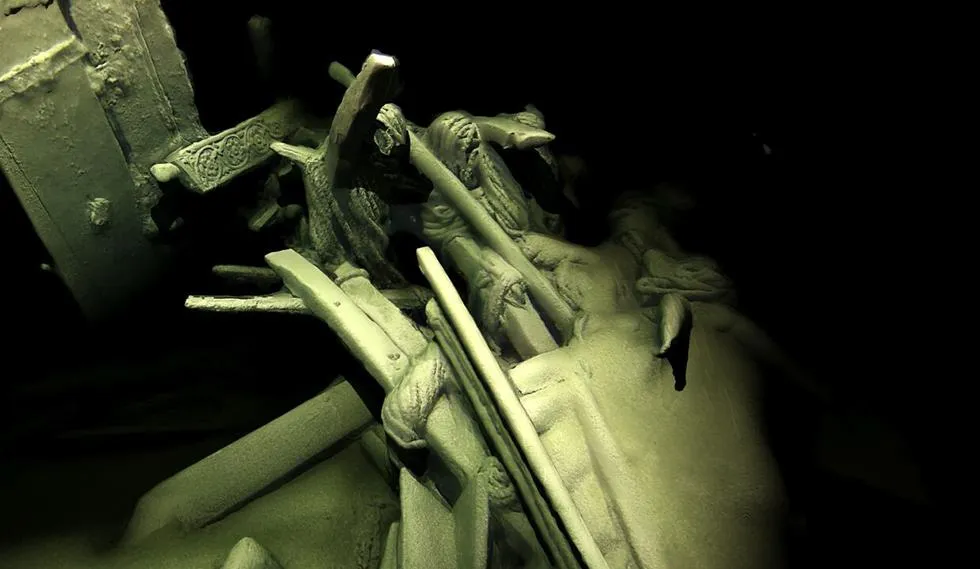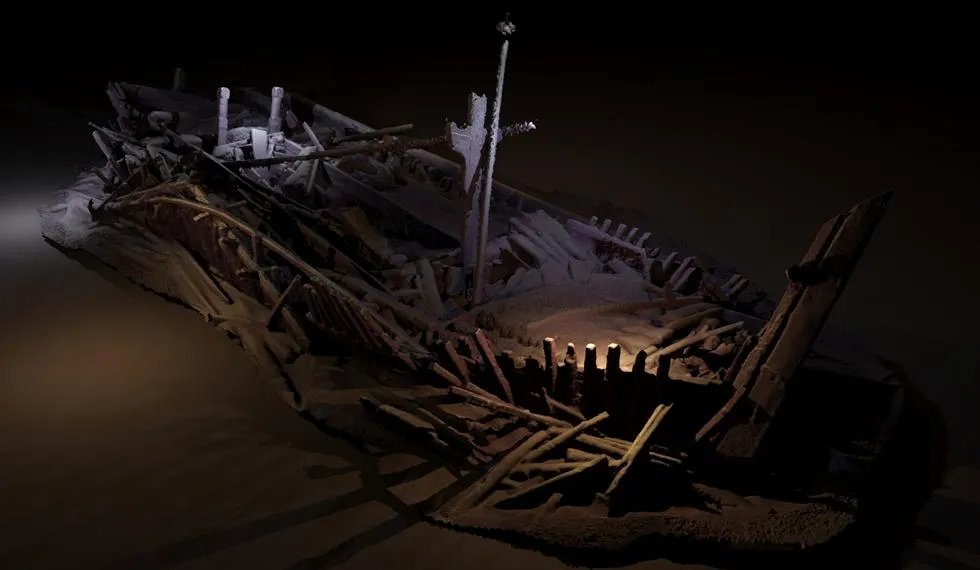Over 40 Ancient Ships Discovered on the Bottom of the Black Sea
Researchers on a geology survey in Bulgarian waters ended up discovering vessels from the Ottoman, Byzantine and Venetian empires
About 12,000 years ago, at the end of the last Ice Age, melting glaciers began filling the Black Sea. Researchers still aren’t sure just when the sea began to rise, how much land it covered and what the impact may have been for the human populations living seaside. That's why an international team of researchers began the Black Sea Maritime Archaeological Project, which, according to a press release, surveyed large areas of the sea floor off of Bulgaria earlier this fall.
Hopefully that data will eventually provide some answers, but in the meantime the survey uncovered something really cool—44 almost perfectly preserved shipwrecks, some dating from the Byzantine and early Ottoman empires.
Stephanie Pappas at LiveScience reports that the researchers aboard the ship Stril Explorer used two remotely operated vehicles (ROVs) to examine the seafloor and the wrecks. One ROV took conventional video of the wrecks while the other was set up to conduct 3D photogrammetry, in which thousands of high-resolution are taken then combined via software to create a detailed three-dimensional image of the ships.
The Black Sea, it turns out, is one of the world’s best ship graveyards. That’s because, Pappas explains, the sea gets a drizzle of salty water coming in from the Mediterranean which combines with fresh water entering the sea from rivers and streams on land. That combo creates layers with the salt water sitting on the bottom and the fresh water on top. The layering keeps oxygen out of the lower reaches of the sea, preventing some of the microbes, worms and other creatures that eat away ships from touching the wrecks.
“The wrecks are a complete bonus, but a fascinating discovery, found during the course of our extensive geophysical surveys,” says Jon Adams, principle investigator and director of the University of Southampton’s Centre for Maritime Archaeology. “Using the latest 3D recording technique for underwater structures, we’ve been able to capture some astonishing images without disturbing the sea bed. We are now among the very best exponents of this practice methodology and certainly no-one has achieved models of this completeness on shipwrecks at these depths.”
William J. Broad at The New York Times reports that standouts among the 44 ships so far discovered include a medieval trading vessel from the 13th or 14th century that was likely a from the Venetian empire. “That’s never been seen archaeologically,” expedition member Rodrigo Pacheco-Ruiz, tells Broad. “We couldn’t believe our eyes.”
The team nicknamed another outstanding Ottoman ship the “Flower of the Black Sea” for the ornate petal carvings still visible on the craft. The team also observed details on other ships including coiled ropes, chisel marks, rudders and other carved ornaments.
The team has not announced any plans to actually excavate any of the shipwrecks, but Brendan P. Foley, an archaeologist at the Woods Hole Oceanographic Institution tells Broad that the condition of the ships indicates that they might be full of historical treasures. “You might find books, parchment, written documents,” he says. “Who knows how much of this stuff was being transported? But now we have the possibility of finding out. It’s amazing.”
It’s not the first time that amazing wrecks have been found in the Black Sea. In 1999, Titanic discoverer Robert Ballard began looking for ships in the area, and discovered several off the coast of Turkey. The most famous was Sinop D, a perfectly preserved Byzantine vessel full of clay jugs and other merchandise that is still undergoing excavation.
